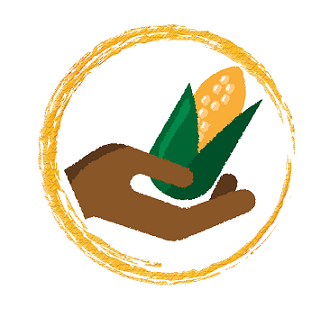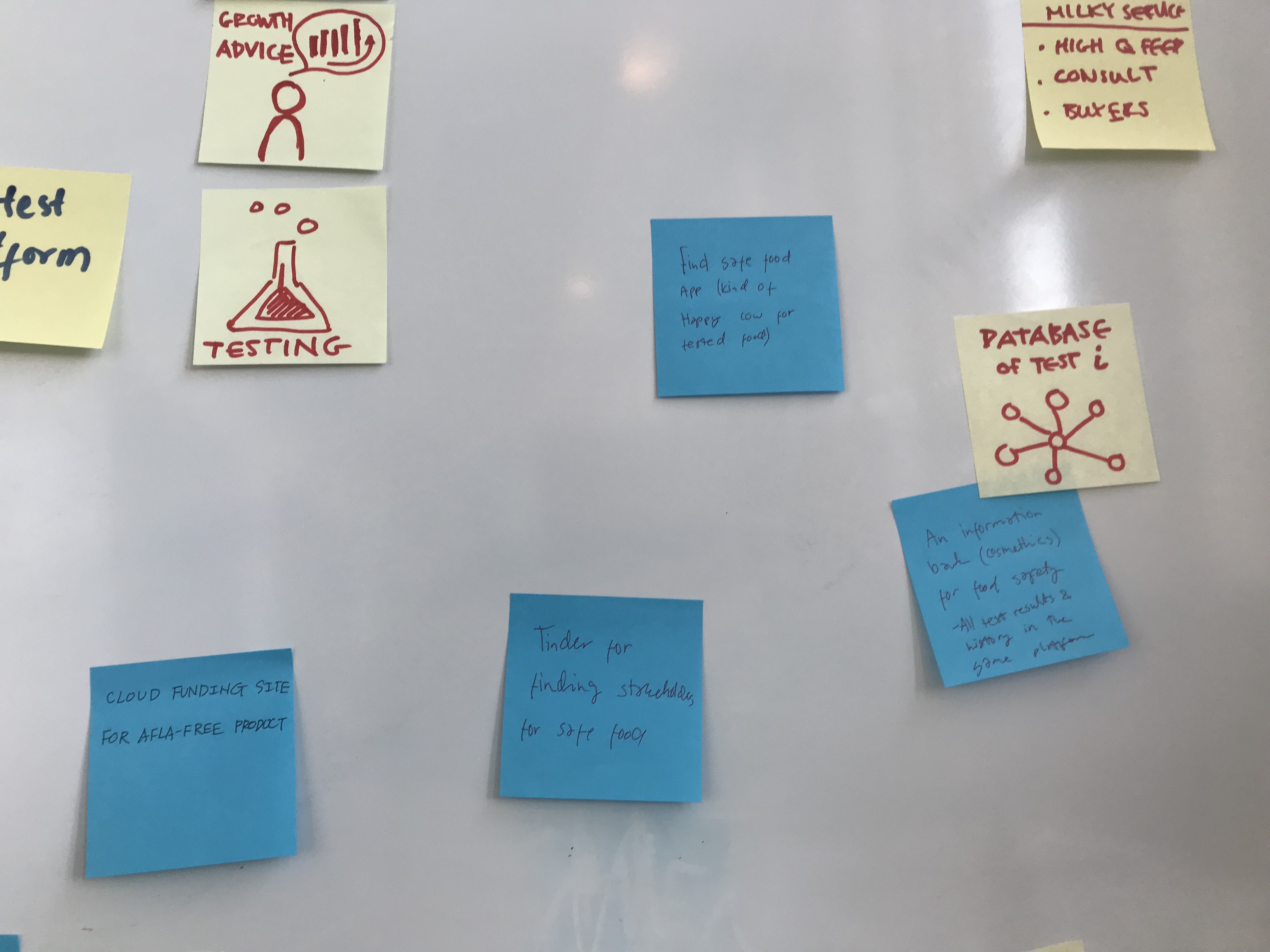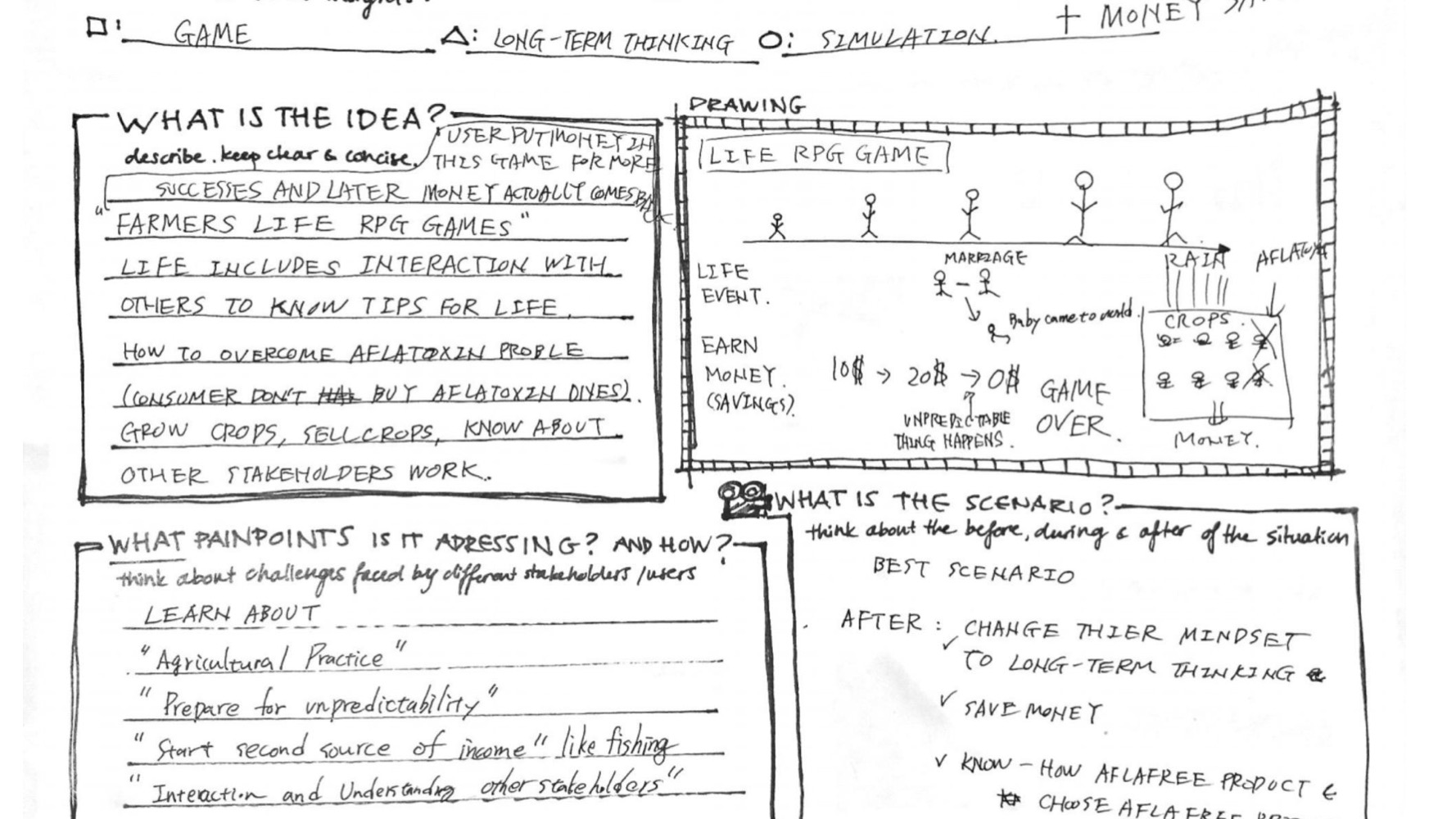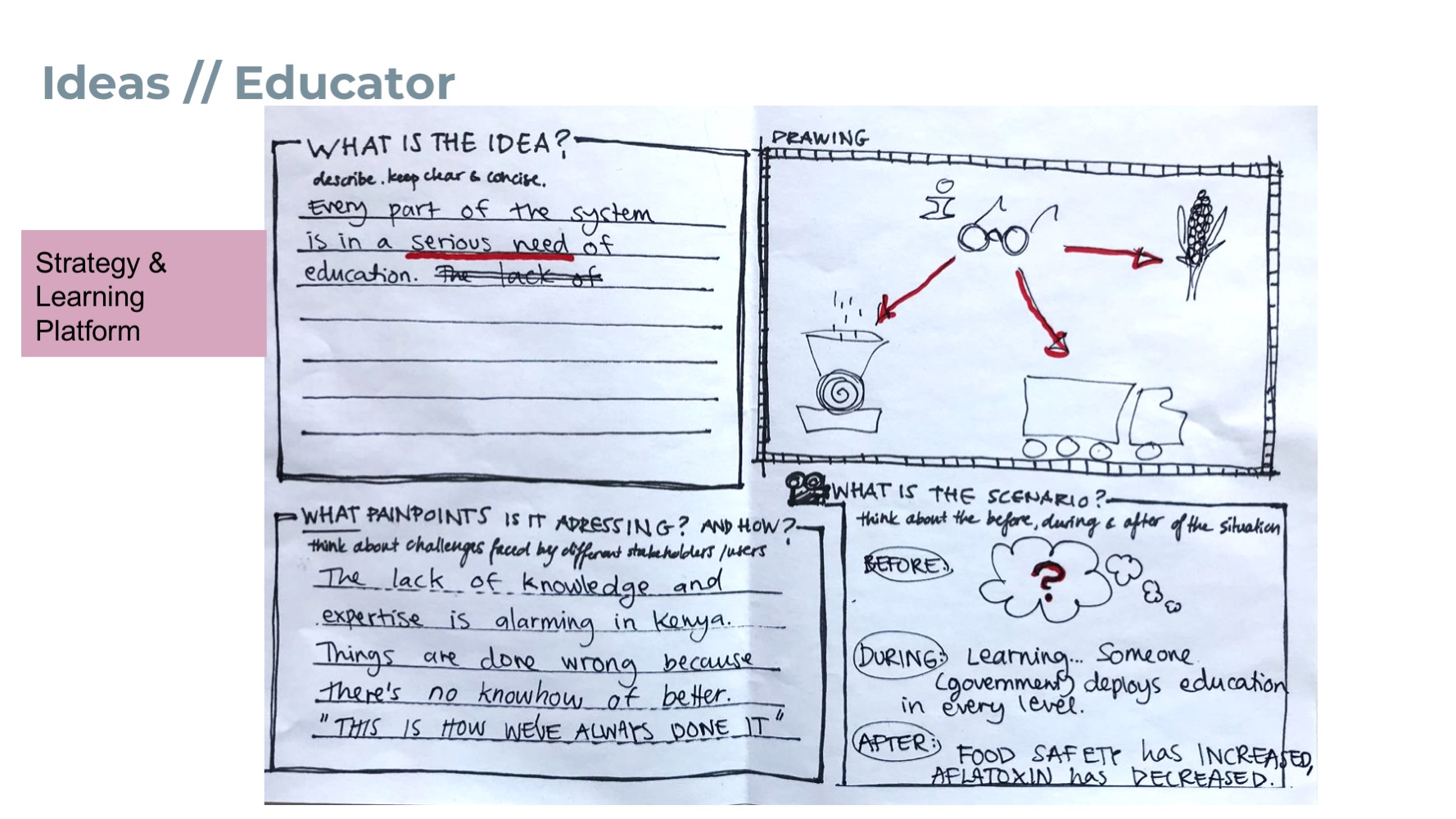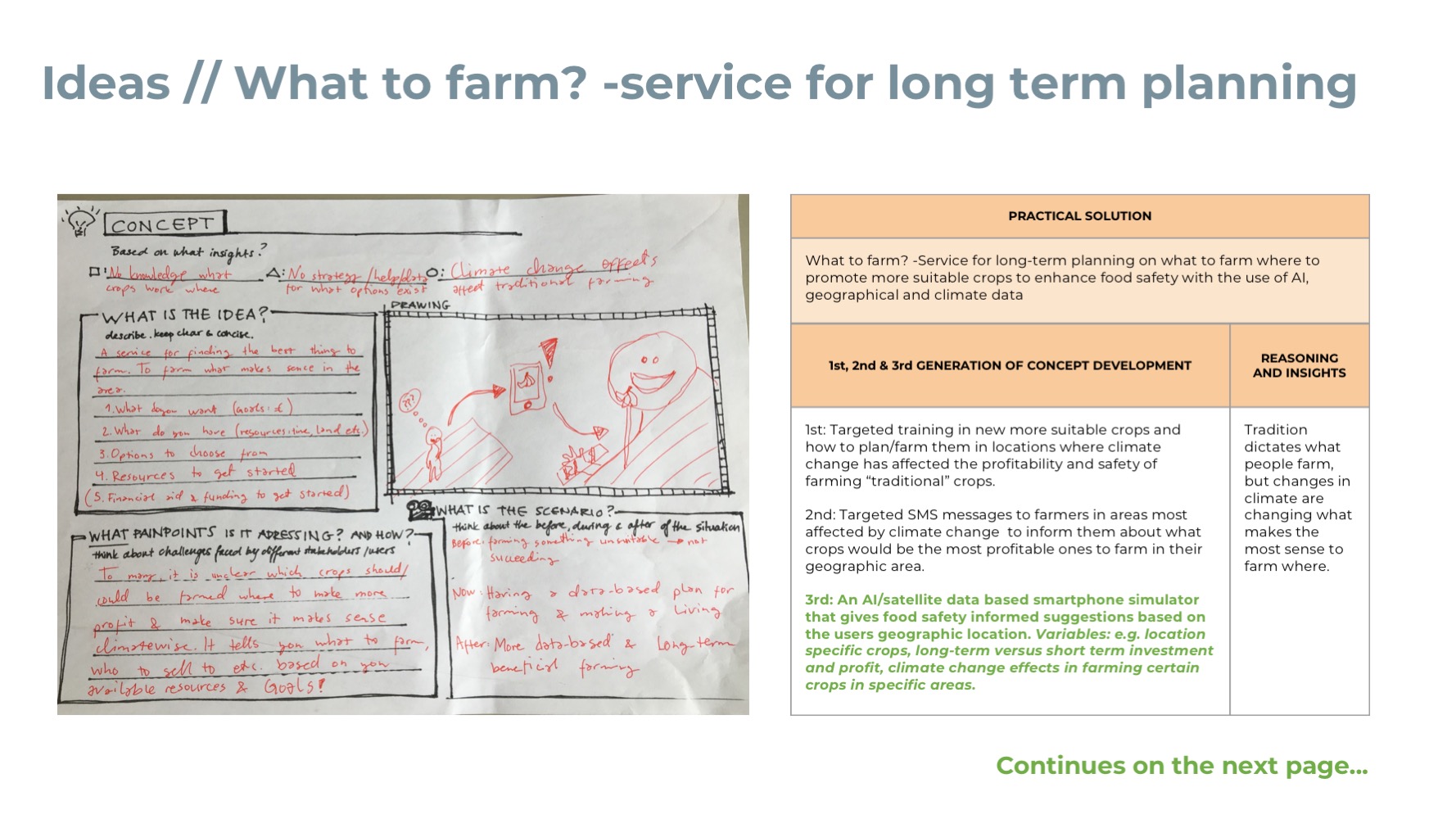
Process in brief:
- Co-creation workshop to discuss & share key insights
- Brainstorming individually & in the group for a variety of solutions
- Filling in concept templates for developing initial ideas
- Combining ideas & concepts into more refined solutions
- Creating a solution roadmap from the chosen concepts
- Presenting the ideas to the client & getting feedback
- Developing details of concepts & the holistic roadmap for final solution
Context:
After we had mapped out and analysed our insights, we entered the solution phase of the project. Everyone in the team had recorded their ideas along the way but it was time to start the process in a more constructive manner. So we had the insights and system mapping out of the way but how could we actually change that into solutions for the wicked problem that seemed to get more complex every time you look at it?
Co-creation process:
We started with a co-creation session (co-creation is a shared process where people from different backgrounds work together to tackle a issues in a collaborative manner) where we came in prepared with the key findings and insights we all personally felt had been the most interesting throughout the project. In the beginning of the session we all wrote down the leverage points / interest areas we would like to ideate on later, and shared them on a whiteboard while discussing and clustering them simultaneously. (See some initial ideas below)
In these discussions we found a lot of similarities yet different angles approaching the same issues. We also noticed that the natural ways of formulating and describing ideas were very different to different people. Some went straight to ideas while others were crystallising the insights into more precise opportunity areas.
In the next step we started thinking about more concrete solutions to solving or tackling the issues we had identified on the board. We first generated ideas independently and then shared them with the group while clustering and building up from other people’s ideas to create new ones. (see picture below) This going back and forth with independent thinking and sharing with the group worked very well with our team.
After we had created a shared understanding of the ideas, we went home with an assignment of filling out three custom made ideation templates/per person where we further develop and describe at least three separate ideas we want to develop further. (See examples of filled in concept templates below)
Ideation and concept development process:
The next time we met, we presented our ideas from the concept templates. Concept in this process means an idea that is developed a little bit further, so it is an idea for a solution but not necessarily fully developed or validated yet. It is an idea that can be presented to others as a solution for a problem and it is used to gather feedback and refine the solution into something more tangible.
We soon noticed a pattern in our concepts. They were all more or less tackling the same insights, but approached them from different angles and with different focus areas. After realising this we started combining the concepts to formulate an initial roadmap for sequencing the ideas into a timeline in the order in which they could be possibly implemented. There were ideas that could be implemented even in the current system and then there were others that required many of the other concepts to take hold and change the system first for them to be implementable. (See some refined concepts below)
To support this long-term change that is required to achieve such a profound change in society, we created a challenge roadmap (Roadmap in this context is a plan for a period of time that describes the required steps that need to be taken in order to achieve the desired end results). In the roadmap we described the changes in the system we had identified in our analysis phase. The roadmap includes the initial and high-level ‘stages’ in which we would propose to implement the change in the system.
We also created a solution roadmap with the ideas we wanted to present to the clients to get the most diversified feedback to a variety of potential approaches we could take into the final solutions. (See the initial roadmaps below)
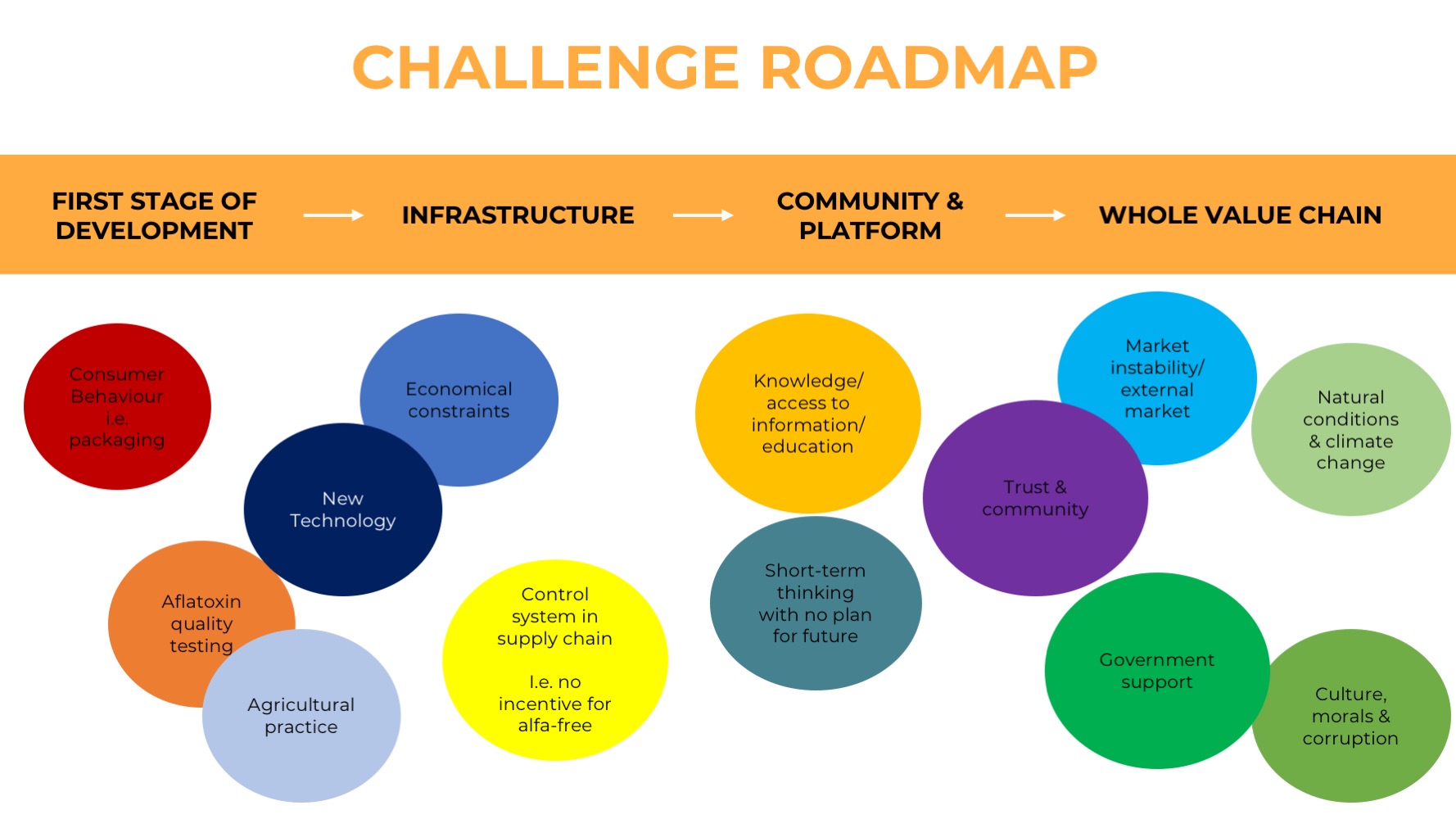
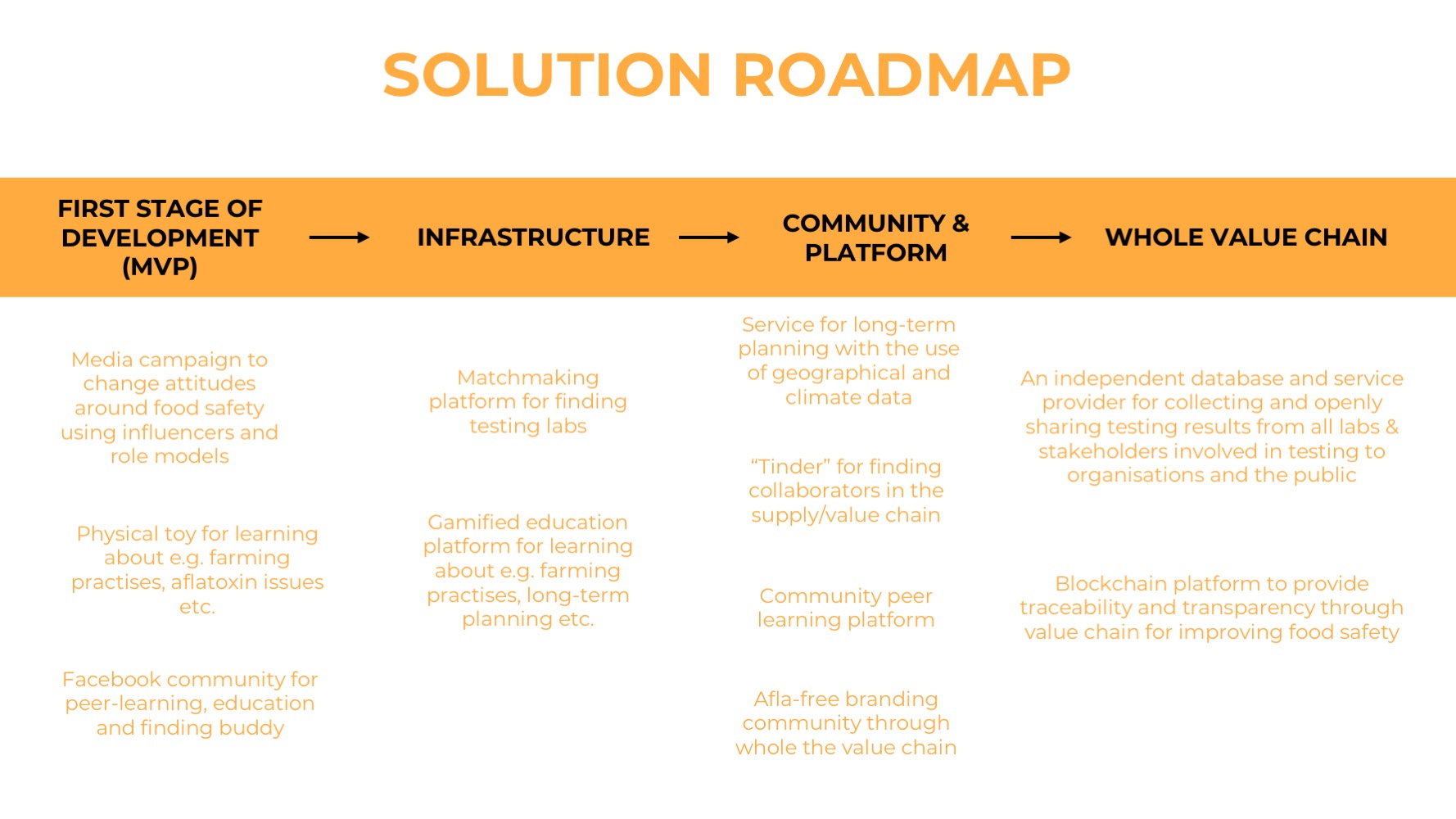
Refining the final solutions:
After presenting our roadmap and ideas to the client, we had a much clearer understanding of where to go with our solutions. Based on all the feedback over the previous months, we chose to go with roadmap plan for the future, where we showcase the desired change over time and dive deeper into a few more detailed concepts that could be a part of the overall systemic change. (See the draft version of our final roadmap below)
We visualised the roadmap for the final pitch as well as developed a few selected concepts further using the business model canvas, service map and visual communication to create some coherence and diversity in the solution space.
